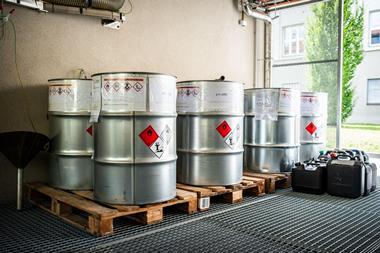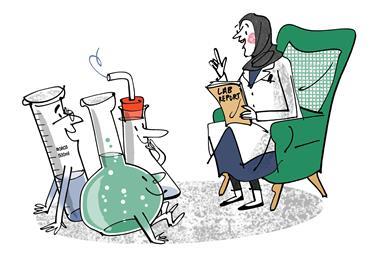Readers discuss immortality, wine and hair straightening
Cost of immortality
Philip Ball’s article on the idea that rejuvenating the ends of chromosomes can be an anti-aging elixir of youth injects healthy scepticism into what appear to be some outrageous claims.
The restoration of activity for the telomerase enzyme will, it is suggested, elongate those telomeric chromosome ends and lead to prolonged life for our cells. But this approach may be naïve and even positively harmful. The article suggests, quite rightly, that this is a consequence of a lack of appreciation of the complex biology involved in aging and telomere maintenance. However, there is another, yet more concerning reason. Telomerase expression can indeed confer immortality on cells but this comes with a heavy price. The enzyme is up-regulated in over 90% of human cancers and induction of telomerase activity is a major contributor to tumorigenesis – indeed this is one of the key hallmarks of cancer. Unsurprisingly there have been several attempts to develop telomerase inhibitors as anti-cancer agents, at least one of which has reached clinical trials.
Stephen Neidle
London, UK
Analysing wine
Regarding Alan Dillarstone’s letter ‘History repeats itself’, British Rail (which was a large purchaser of wines at this time) analysed hundreds of Austrian wines for potential contamination with glycols. I was responsible for these analyses at its Research Division in Derby – initially by high-resolution chromatography–high-resolution mass spectrometry (HRC–HRMS), and then, routinely, by high resolution gas chromatography–ion trap mass spectrometry (HRGC–ITMS).
We did indeed find diethylene glycol and glycol ethers in some samples, and a few contained free ethylene glycol. In 1986 we also analysed wines for methanol following the Italian wine scandal.
Diethylene glycol (usually at higher levels than we found) has led to numerous epidemic poisonings worldwide. It is metabolised by alcohol dehydrogenase to the toxic metabolites 2-hydroxyethoxyacetic acid (HEAA) and diglycolic acid (DGA), potentially resulting in permanent renal failure and neurotoxicity. It is possible that its consumption with a larger amount of ethanol in these wines may have ameliorated any toxic effects (see DOI: 10.1080/15563650903086444).
Tim Strutt CChem MRSC
Western Australia
Hair straightening risks
Human hair is a protein material containing at least 18 different amino acids and exhibits surprising strength thanks to multiple cystine disulfide cross-links. Chemical hair straightening is invariably carried out using highly alkaline solutions usually based on sodium hydroxide or guanidine. The high alkalinity of the straightening solution eliminates one sulfur atom from the cystine disulfide cross-link to form a new lanthionine monosulfide cross-link, a reaction that is accompanied by the production of anionic sulfide, which is a strong reducing agent. Some commercial suppliers of such formulations term the process lanthionisation.
None of the alkali products raises suspicion that significant amounts of carcinogens are released. However, the National Institute of Environmental Health Sciences in the US carried out a study that found a strong correlation between alkaline hair straightening and previous colouration with oxidative hair dyes (DOI: 10.1093/jnci/djac165).
Oxidative hair dyeing involves the reaction of aromatic diamines, such as para-phenylene diamine or ortho-toluene diamine, with peroxide and phenolic couplers to give polyazine pigments. A sulfide-based reducing system converts the polyazine chromophore in the oxidatively coloured hair into a variety of colourless aromatic amines. This chemistry is used in commercial products; a popular hair colour-remover in home or salon use is based on sodium hydroxymethane sulfinate and is available as ColorB4, Louise Galvin Colour Remover, Rusk and JoBaz. These all indicate on their ingredient labels that they contain sodium hydroxymethane sulfinate. This reagent is permitted for use as a reducing agent in the EU cosmetic directive.
Sodium hydroxymethane sulfinate reduces the polyazine residues in oxidative hair colours; this reduction is very efficient but significant amounts of colour (up to 20%) returns on air oxidation.
It is likely that sulfides produced from the alkaline degradation of cystine to form lanthionine cross-links will readily reduce the polyazine pigments to form a variety of aromatic amines, some of which are water-soluble and will be readily absorbed through the skin – and, if carcinogenic, will be the reason for the warning coming from the NIH analysis.
David Lewis
Leeds, UK
Chemistry World welcomes letters, which should be concise (normally fewer than 300 words) and timely. Those selected for publication are subject to editing for clarity and length. Letters should be marked ‘for publication’ and sent to chemistryworld@rsc.org
We do not routinely acknowledge letters.












No comments yet